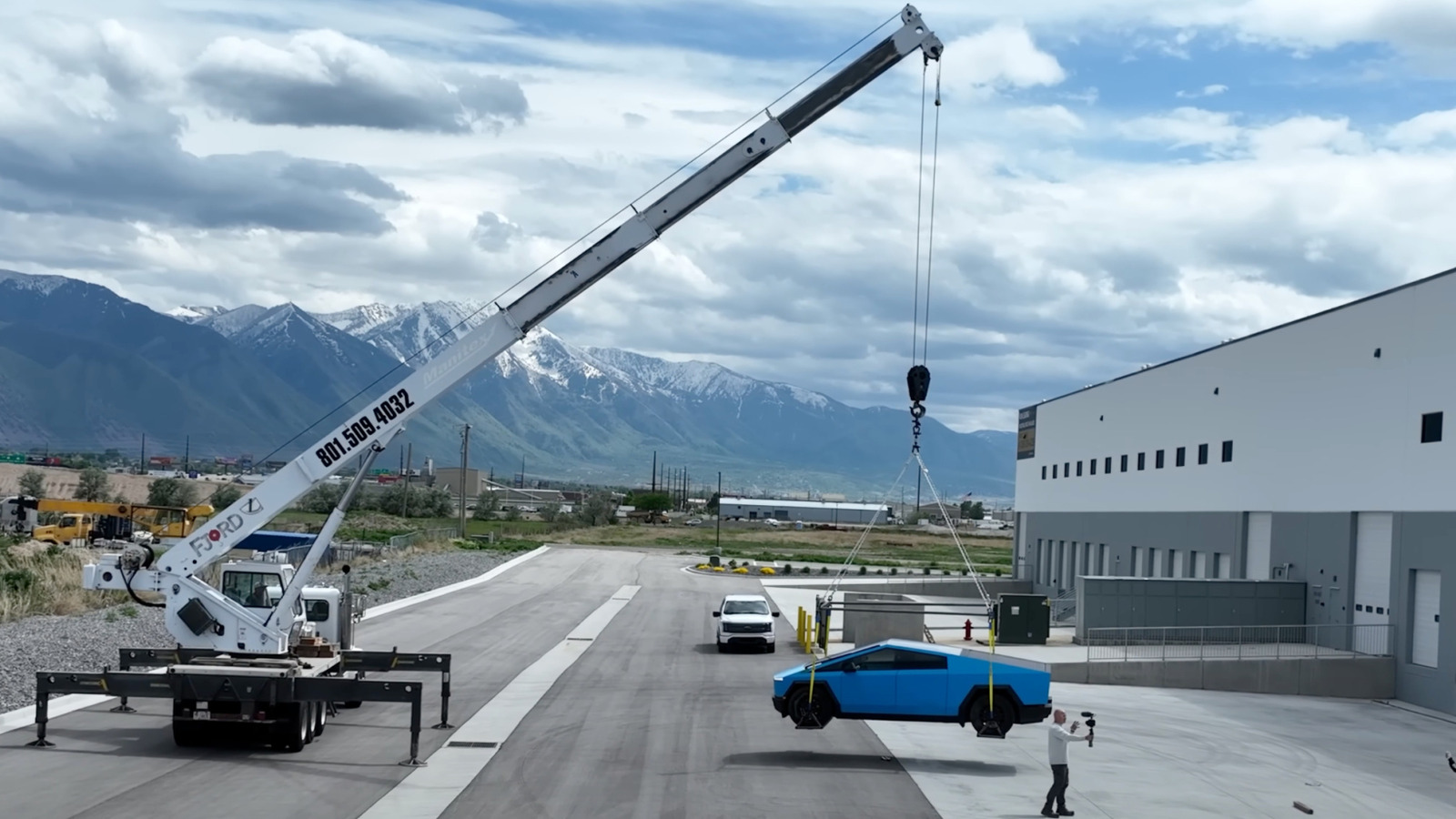
The Tesla Cybertruck has taken its fair proportion of flak — from depreciation to physique panels falling off. Now it is going viral once more for one thing solely sudden: being held mid-air by glue. In a latest YouTube video by JerryRigEverything, the wedge of chrome steel and fragile egos is seen dangling off the bottom suspended from a crane. The one factor maintain up the $100,000 truck was a two-and-a-half-inch patch of Tesla structural adhesive between the crane’s hook and the 6,600-pound car.
This stunt adopted a legit concern of Jerry’s round Tesla’s structural restore technique. Months earlier, the identical truck suffered what appeared like a catastrophic failure when its tow hitch ripped clear out of the rear casting throughout a stress check that pushed far past its rated 1,100-pound tongue weight. As an alternative of getting totaled, the truck was repaired utilizing Tesla’s printed restore process: sectioning out the damaged gigacasting and gluing in a substitute part utilizing a structural adhesive known as Fusor 2098.
After curing, this particular restore adhesive has a tensile power of three,190 kilos per sq. inch (psi). A two-and-a-half-inch patch of the identical blue glue utilized in that restore bore your entire weight of the Cybertruck. You learn that proper — glued, cured, then hoisted skyward. Whether or not you see that as genius or terrifying in all probability is dependent upon how a lot time you’ve got spent in collision retailers. Both means, it is a powerful demonstration.
Cool stunt, however what this implies for contemporary automotive restore
The thought of glue holding your automotive collectively feels somewhat unsettling — like duct tape on a spaceship. However in immediately’s auto engineering, it isn’t simply widespread, however in lots of instances, it is the smarter, stronger alternative. The adhesive used within the Cybertruck restore is a two-part epoxy categorised as a Crash Sturdy Structural Adhesive. It is not Tesla-exclusive, both — all OEMs use comparable stuff for high-strength bonding throughout differing substrates.
Why not simply weld it? Effectively, adhesives in some functions distribute hundreds extra evenly, protect materials integrity, and shield towards corrosion between joints. Plus, when paired with mechanical fasteners like rivets — which Tesla additionally specifies for this restore — the ensuing bond can outperform welds in peel and impression power.
However there is a flip aspect: in case your trip wants this sort of repair, it higher be performed precisely by the guide. Adhesives will be uber-strong, however that does not imply it may well, or ought to, be utilized in lieu of OEM restore procedures. Tesla mandates that solely licensed retailers use specified adhesives, components, and procedures. No aftermarket shortcuts, no recycled buildings, and completely no expired glue. Each step — from grinding off etch-coat, to rivet sort and spacing, to adhesive bead thickness — all specified by the restore manuals.
Here is the place issues get murky, although. Should you’re in a wreck, your insurance coverage coverage guarantees to return your automotive to its “pre-loss situation.” However what does that even imply while you’re gluing in structural chunks that have been as soon as a monolithic piece? Is a sectioned-then-epoxied casting nonetheless “because it was”? Tesla says sure — the restore is OEM-approved. Technically talking, it ought to meet or exceed unique specs — however that is assuming the job’s performed proper. Actually, we might like to see JerryRigEverything run that hitch check once more on the repaired Cybertruck. If the glue job actually is stronger than inventory, that truck ought to out-muscle its manufacturing facility self.